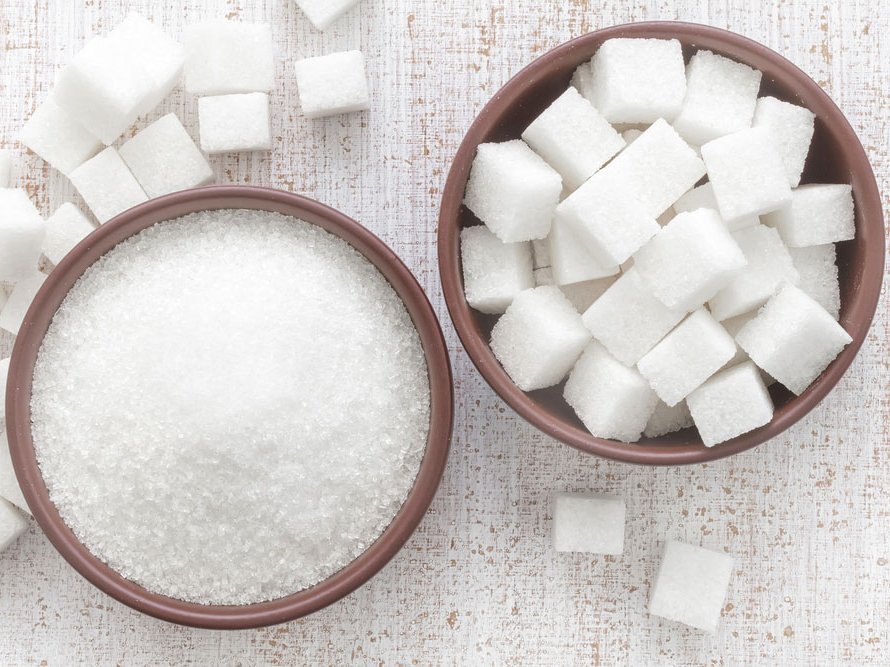
There are many negative associations with getting too much sugar in your diet: increased risk for weight gain, increased risk for inflammation, increasing insulin demand in the blood stream and increasing risk for high triglycerides.
Another down side of getting too much sugar is you can actually get addicted to sugar.
Eating moderate amounts of sugar is not considered sugar addiction. An addiction is defined as compulsive, uncontrollable behavior with repeated cycles (1).
In the case of sugar addiction, binging on foods high in sugar is part of the cycle. Withdrawal can happen when the binging stops.
Research studies (2) suggest binging on sugar can influence neural pathways similar to drugs.
For example, binging on sugar can increase the release of dopamine in the neural system. Similar to drugs, cutting out sugar may lead to withdrawal symptoms.
However, the withdrawal symptoms from sugar withdrawal should be temporary. Getting through sugar withdrawal can be done, but it can take a high amount of consistency, discipline and support.
Withdrawal symptoms and length can vary. Some people may experience sugar withdrawal symptoms for a few days, but it may also last up to a few weeks for some people.
If you are experiencing the cycle of sugar binging and withdrawal symptoms, seeking the guidance from health professionals may offer additional benefit.
Sugar cravings
One of the most obvious signs of any withdrawal is the desire to go back to your addiction. With sugar withdrawal, you can get strong cravings for the sugar you are trying to avoid.
How can you resist sugar cravings through withdrawal? It may not be easy, but following these steps can help.
- Avoid certain aisles in the grocery store that have sugary foods. Do not buy your “go to” sugar foods when you are trying to cut out sugar! Don’t bring them in your house or work environment. Keeping things out of sight will help keep them out of mind.
- When you are craving something sweet, turn to naturally sweet foods like fruit. Eating fruit in place of other sweets can help satisfy your sweet craving, but fruit also provides many other nutrients like antioxidants and fiber.
- Chew gum when you are craving something sweet. According to WebMD (3), chewing gum may help reduce food cravings.
Headache or feeling light headed
Another symptom that could be a part of sugar withdrawal is having a headache or feeling light headed.
This could be a response to altered impact on neural pathways from cutting off sugar, or a headache may result from the change in the blood sugar levels when going cold turkey from sugar.
Either way, some tips to counter a headache or feeling light headed from sugar withdrawal include the following.
- Drink adequate fluids through the day, and make most of your fluid intake water. Sugary beverages can be a concentrated source of empty calories and sugar. Cutting them out is a first step to lowering added sugar intake. Instead of not drinking any fluids, bump up your water intake.
- Keep a water bottle with you and aim for drinking 8 cups of water through the day. Reaching for unsweetened tea can also be an option for helping to reach your recommended fluid intake. Avoiding alcohol is also recommended.
- Eat something every 3-4 hours. This can help stabilize blood sugar levels. Eat a source of fiber (whole grains, legumes, fruits, vegetables) with a healthy protein and fat source. For example, pair together an apple with some peanut butter and whole wheat crackers for a snack. By providing stable energy, blood sugar levels won’t be swinging up and down through the day which may help headache or light headedness.
Changes in mood
Some people may feel irritable or depressed when going through sugar withdrawal. A change in mood may happen due to the changes in endorphin release.
Since sugar impacts endorphin release, when you cut off sugar your mood may change.
However, this should be temporary. To combat changes in mood, follow advice for keeping blood sugar stable mentioned above.
If you are feeling irritable or sad, find something to fill your time with that you enjoy that is positive.
For example, reading, sewing, walking outside, riding a bike, photography, etc. can all be positive outlets during sugar withdrawal that can help release some feel good endorphins in the brain.
Changes in energy levels
Lethargy or increased tiredness can also be a symptom as the body and brain adjust to not having sugar. This should also be temporary. If you feel this way, aim to eat regularly throughout the day with balanced meals to support energy levels.
Increasing your activity may be the last thing you want to do, but some exercise can actually make you feel more energized.
Even just a few minutes of stretching, calisthenics, walking or other exercises can help give you a boost of energy.
Sugar withdrawal tip: don’t go overboard on sugar substitutes
The use and safety of sugar substitutes is often debated amongst health professionals. Some suggest it can be a viable way for weaning off sugar and even help with weight loss.
However, some studies suggest sugar substitutes may actually interfere with the reward center of the brain and can actually increase desire for sweet tasting food and drink.
Some studies also suggest some sugar substitutes may negatively impact gut bacteria levels.
If you choose to use sugar substitutes, keep the intake to a minimum. Switching from a high sugar intake to a high sugar substitute intake is not addressing the root problem of craving sweets.
A high intake of sugar substitutes could alter your taste preferences because sugar substitutes are sweeter than regular sugar.
The goal is to eat less sweet foods, not swap in more artificially sweetened foods and drinks in your diet.
